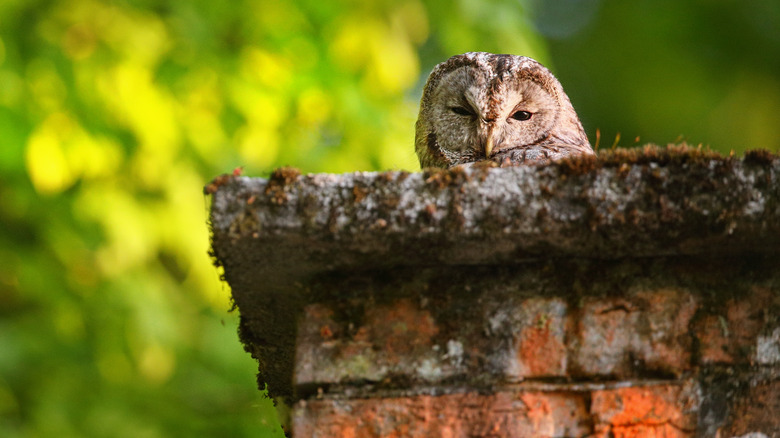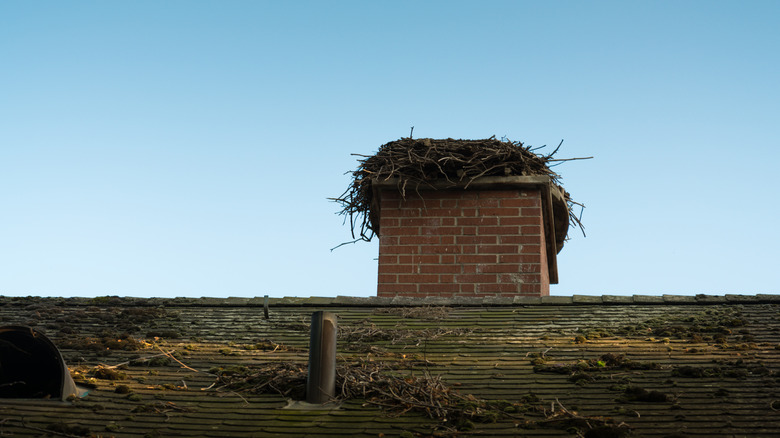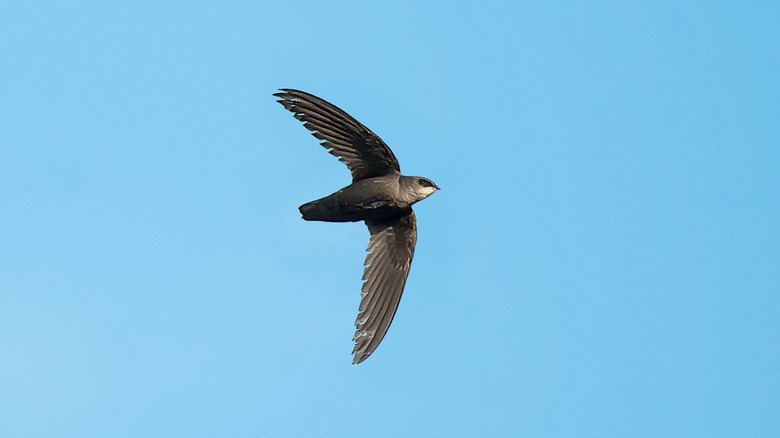What Can You Do If A Bird Is In Your Chimney?
Chirps from above, the rustle of wings, or a stray feather making its way down your fireplace — these might not be the plot of a Hitchcock film, but rather signs of an unexpected guest. Birds seeking shelter or inadvertently falling into chimneys is a phenomenon that many homeowners encounter.
Discovering a bird in your chimney can be unsettling, but it's crucial to approach the scenario with patience and empathy. Start by securing the room containing the fireplace and closing doors to prevent the bird from moving to other areas of the house if it escapes. The best-case scenario is that you can trap the bird in your fireplace. In case you do get that opportunity, have a soft towel or cloth ready and throw it over the bird to trap it. Then, gently wrap the bird, ensuring its wings are safely pressed against its body; this can reduce the risk of injury and stress, allowing for a safer release outdoors.
You can also use the bird's natural inclination towards light. Darken the room but ensure there's a single light source, preferably from an open window, which can act as a beacon guiding them out. You could even use a flashlight to help them out of the chimney before turning it off for them to fixate on the next light source, like the window. Please remember that safety is essential. Wearing protective gloves and eyewear can shield you from potential pecks or scratches.
Why birds in your chimney can be dangerous
Birds becoming trapped in chimneys can be a serious problem with tragic consequences. Think about the next time you light your fireplace, unaware of its presence. Not only could the bird be fatally affected by the smoke, but if it catches fire, it could spread flames throughout the home as it tries to escape, endangering both the bird and the household.
This highlights the importance of regular chimney checks before use. If you suspect nesting in your chimney, it's crucial to address it immediately. Bird nests can ignite, causing a fire and filling your home with smoke, and they also present health concerns. One notable danger is histoplasmosis, a disease transmitted through bird droppings. While many adults can weather this illness, it can severely impact those with compromised immune systems, as well as the young and elderly, potentially leading to life-threatening complications.
What birds are commonly found in chimneys? Although this is dependent on where you live, the usual suspects are chimney swifts. Living up to their names, they have morphed their nesting habits to suit urban environments; with rapid urbanization, they've turned to chimneys. Notably, chimney swifts are protected under the Migratory Bird Treaty Act, which prohibits their removal or any disturbance to their nests. Other common chimney nesters include starlings and sparrows. These smaller birds sometimes mistake chimneys for the hollows of trees, and unlike swifts, they aren't as skilled at freeing themselves. Therefore, you might need to use the methods above to help them.
Prevention and when to seek professional help
The old adage, "An ounce of prevention is worth a pound of cure," is particularly apt when discussing unexpected feathered guests in our chimneys. To safeguard against these unwelcome visits, homeowners can proactively install protective devices like chimney caps or crowns. These mesh-like barriers serve a dual purpose: they facilitate the safe exit of smoke while preventing birds and other wildlife from accessing the chimney's interior, thereby significantly diminishing potential encounters.
However, it's crucial to respond promptly if you find yourself face-to-face with a bird in your chimney. And if the situation feels overwhelming or extends beyond a comfortable timeframe, it's essential to acknowledge one's limitations. Not everyone possesses the skillset or comfort level required for bird rescue. In such cases, it's prudent to call in professionals. Chimney sweeps and wildlife experts are adept at managing these scenarios, armed with the right tools and experience to ensure the bird's safety and yours.
It's crucial to approach the situation with empathy. Birds trapped in chimneys are likely as startled and stressed as the homeowners who discover them. While lighting a fire might cross one's mind in hopes of encouraging the bird to exit, this tactic is inadvisable. Such an extreme action can inflict serious harm on the bird, or even kill it. Navigating these situations demands patience, understanding, and careful handling to ensure the well-being of both the bird and the homeowner.


